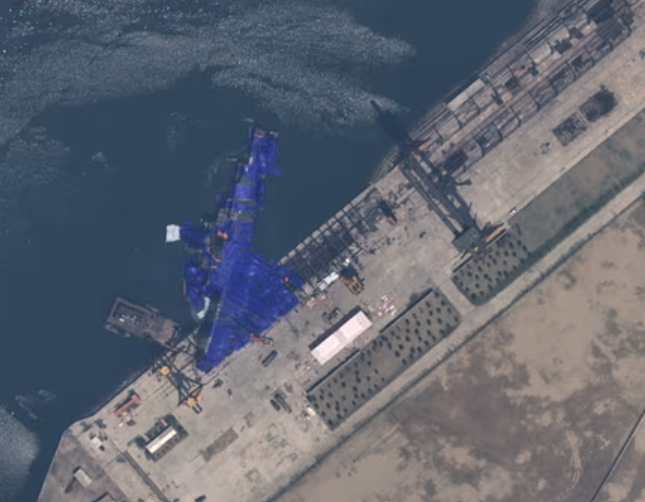On May 21, 2025, a significant mishap occurred during the launch of a new 5,000-ton-class naval destroyer at the Chongjin Shipyard in northeastern North Korea. The vessel, part of the Choe Hyon-class, was intended to bolster the country’s naval capabilities. During the launch ceremony, the ship tipped over, with the stern entering the water while the bow remained on the slipway, causing substantial damage to the hull. The incident was witnessed by North Korean leader Kim Jong Un, who later described it as a “criminal act” resulting from “absolute carelessness” and vowed to hold those responsible accountable.
Arrests and Accountability
In the aftermath of the failed launch, North Korean authorities detained three senior officials from the Chongjin Shipyard:
- Kang Jong Chol – Chief Engineer
- Han Kyong Hak – Head of Hull Construction
- Kim Yong Hak – Deputy Manager for Administrative Affairs
These arrests reflect the regime’s stringent approach to military and technological failures. The Korean Central News Agency (KCNA) reported that a formal investigation has been launched to determine the causes and responsibilities associated with the mishap. Additionally, the manager of the Chongjin Shipyard, Hong Kil Ho, has been summoned for questioning.
Damage Assessment and Repair Efforts
Satellite imagery from the incident site shows the warship lying on its side, partially submerged and covered with blue tarpaulins. North Korean state media initially claimed that the damage was “not serious,” citing minor scratches and some seawater ingress into the stern section. However, external analysts have expressed skepticism, suggesting that the damage may be more extensive, potentially affecting the engine room and requiring significant repairs. Despite these concerns, Kim Jong Un has ordered that the vessel be restored before the upcoming ruling party meeting in June, underscoring the regime’s emphasis on military readiness and discipline.
Strategic Implications
The failed launch of the Choe Hyon-class destroyer represents a setback for North Korea’s naval modernization efforts. The vessel, believed to be capable of carrying nuclear-capable cruise missiles, was intended to enhance the country’s naval deterrence capabilities. The incident not only hampers these ambitions but also damages the regime’s prestige, particularly as it seeks to project strength in the face of perceived external threats. Analysts note that the mishap could delay the deployment of the destroyer, which was initially expected to enter service early next year.











